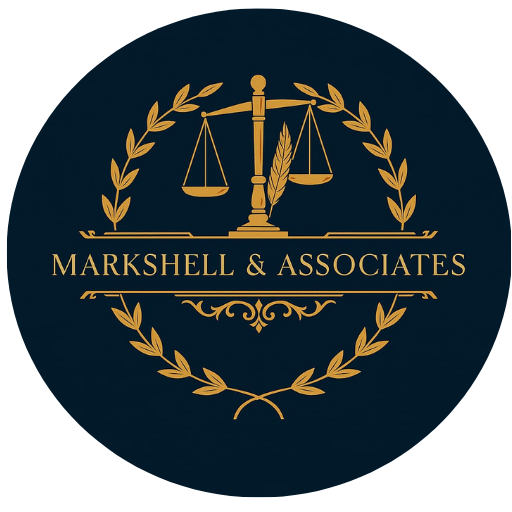Looking for Markshell service?
+91 9211978238

Trademark Opposition
Trademark opposition is a legal process that allows any third party to challenge the registration of a trademark that has been accepted and published in the Trademark Journal. If someone believes that a published trademark is identical, deceptively similar, misleading, or damaging to their existing rights, they can file an opposition to stop it from being registered.
Who can file a trademark opposition?
Any interested person — such as a registered trademark owner or someone who believes the new mark may damage their rights — can file an opposition.
When can I oppose a trademark?
You must file a Notice of Opposition within 4 months from the date the mark is published in the Trademark Journal.
What are the main reasons to oppose a trademark?
Common grounds include similarity to an existing mark, being deceptive, descriptive, generic, prohibited by law, offensive to a community, or filed in bad faith.
What happens after filing an opposition?
The applicant must file a Counter-Statement within 2 months. Then both parties go through the evidence stage — exchanging affidavits and documents.
Do I need a lawyer for trademark opposition?
While not mandatory, trademark opposition involves strict deadlines, legal paperwork, and hearings. Having an experienced IP lawyer greatly improves your chances of success.
Hearing on Trademark Opposition — Process and Next Steps
Serving the Notice of Opposition
Filing the Counter-Statement
Evidence Stage
Opponent’s Evidence:
Within 2 months of receiving the Counter-Statement, the opponent submits evidence by affidavit to support the opposition or may choose to rely only on the facts in the Notice of Opposition.
Applicant’s Evidence:
After receiving the opponent’s evidence, the applicant has 2 months to submit evidence by affidavit to support their application.
Rebuttal Evidence:
The opponent may submit evidence strictly in reply to the applicant’s evidence within 1 month of receiving it.
Hearing Stage
* Both parties are notified of the hearing schedule.
* At the hearing, each side’s advocate presents arguments, explains their evidence, and answers any queries from the Registrar.
* If either party fails to appear, the case may proceed ex parte (in their absence) or be dismissed.
* After hearing both sides, the Registrar makes a final decision to either allow or refuse the trademark registration.
Opposition Drivers
Similarity:
The mark is identical or deceptively similar to an existing trademark.
Descriptive or Generic:
The mark merely describes the goods/services and lacks distinctiveness.
The mark is misleading or likely to confuse the public.
Prohibited Marks:
The mark contains prohibited elements under Indian law (like the Emblems & Names Act). Offensive Marks: The mark may hurt religious, moral, or community sentiments. Bad Faith: The applicant filed the mark dishonestly or with fraudulent intent.

Documents Required to File a Trademark Opposition
1. Notice of Opposition:
A formal written statement explaining why you are opposing the trademark. This includes the details of your existing mark, the grounds for opposition, and relevant facts. The Notice is filed using Form TM-O.
2. Supporting Evidence:
Any documents, prior registrations, usage proof, sales invoices, advertising materials, or other records showing your ownership and use of the existing mark. Even small details can strengthen your claim.
3. Power of Attorney (Authorization):
If the opposition is filed through a trademark attorney or agent, you must submit a Power of Attorney (Form TM-48) authorizing them to act on your behalf.
4. Affidavits (During Evidence Stage):
Later in the process, you’ll need to submit Affidavits to present your evidence formally. These must be properly signed, notarized, and organized into clear, numbered paragraphs with attached exhibits.
5. Proof of Service:
Copies of all evidence and affidavits filed must be served on the applicant, and you must provide proof of this service to the Registrar.
Difference Between Trademark Objection and Trademark Opposition
| Aspect | Trademark Objection | Trademark Opposition |
|---|---|---|
| Stage of Initiation | Raised immediately after submission of the trademark application during the initial examination by the Registrar. | Initiated after the mark is accepted and published in the Trademark Journal for public inspection. |
| Who Initiates It | The Trademark Examiner raises objections if the mark lacks distinctiveness, is descriptive, or conflicts with existing marks. | Any interested third party (such as a competitor or rights holder) can file an opposition to prevent the registration. |
| How It Is Initiated | The Registrar issues an Examination Report detailing the grounds for objection. | The third party files a Notice of Opposition stating the reasons for opposing the registration. |
| Submission Method | The applicant receives the Examination Report through the Trademark Office and can check the status online. | The opponent must file the Notice of Opposition with proper authorization (if represented) and detailed reasons, within four months of publication. |
| How to Respond | The applicant must file a Reply to Examination Report (Objection Reply) within one month of receiving the objection. | The applicant must file a Counter-Statement within two months of receiving the Notice of Opposition. |
| Appeal | If the Registrar rejects the application despite the reply, the applicant can appeal the decision. | If the Registrar’s decision after opposition is unfavorable, either party can appeal to the Intellectual Property Appellate Board (IPAB) or the High Court. |
| Process Completion | If the Registrar accepts the reply, the mark is published in the Trademark Journal for opposition. | If the opposition is unsuccessful, the trademark proceeds to registration, and both parties are notified of the final decision. |
Grounds for Trademark Opposition

Similarity with Existing Trademark:
The proposed mark is identical or deceptively similar to an existing registered trademark or a well-known mark, creating a likelihood of confusion among consumers.Lack of Distinctiveness:
The trademark is not distinctive and cannot distinguish the applicant’s goods or services from others in the market.Descriptive Marks:
The mark merely describes the nature, quality, intended purpose, or value of the goods/services and therefore cannot be monopolized by any single entity.Generic Terms:
The mark consists of common or generic words used in daily language and does not qualify for protection as it should remain available for public use.Deceptive or Misleading:
The trademark is likely to deceive or mislead the public about the nature, quality, or geographical origin of the goods or services.Prohibited Marks:
The mark contains prohibited elements, such as those banned under the Emblems and Names (Prevention of Improper Use) Act, 1950 or is contrary to public order or morality.Offensive Marks:
The trademark contains elements that are scandalous, obscene, or offensive and may hurt the religious sentiments or moral feelings of any section of society.
